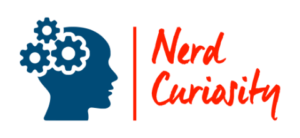In the fast-paced world of product management, it isn’t just your ability to strategize or understand market trends that sets you apart. The real game-changers are often the softer, interpersonal skills that empower you to lead teams, build consensus, and drive a product forward. As you embark on the journey to refine your product management prowess, it’s these soft skills that often predict your long-term success and fulfillment in the role.

Communication, leadership, and empathy are the keystones that support a product manager’s day-to-day activities and overall career trajectory. An adept product manager balances these skills to navigate the dynamic waters of product development, ensuring both the team and the end-users remain top priorities.
As you continue reading, expect to uncover practical guidelines on honing these crucial abilities and integrating them into your professional toolkit. We’ll unpack ways to enhance your communication, grow your leadership capabilities, and foster an empathetic approach to product management, providing actionable insights to evolve as an industry standout.
Understanding the Role of a Product Manager

In the dynamic field of product management, you’ll find that a product manager acts as a linchpin within the product team. Your role bridges the gap between various departments, from engineering to marketing, ensuring that the product vision aligns with market needs and company goals. It’s not just about overseeing the development; you’re the voice of the customer within the company.
Here’s a brief rundown of what you should expect in this multifaceted role:
- Leadership: You steer the product team, offering direction and inspiring innovation.
- Communication: A key part of your job, you’ll be involved in constant discussions, conveying ideas and updates clearly to stakeholders.
- Strategy: You’ll make pivotal decisions about the product’s future, honing in on opportunities for growth.
- Execution: From concept to launch, your hands guide the process, balancing timelines and resource allocation.
In mastering product management, it begins with understanding user experience needs and not just technical aspects. Collaboration is your watchword; you’ll work closely with UX designers and researchers to create products that resonate with users. Your role requires a unique blend of skills—part technical wizard, part empathetic listener, and entirely focused on forging a path to success.
To be successful, hone your expertise in prioritization and research, and sharpen your analytical thinking. Keep in mind, your ability to empathize with customers and interpret data will be crucial in crafting products that stand out in a crowded marketplace. With dedication, you can lead your product through its entire lifecycle, ensuring it delivers value every step of the way.
Mastering Communication Skills

As a product manager, your ability to converse effectively is as crucial as any technical skill. Solid communication bolsters every aspect of your role, from fine-tuning product vision to engaging with your team.
Effective Communication with Stakeholders
You’ll often find yourself in situations where clear dialogue with stakeholders is vital. Your goal is to convey ideas and updates compellingly and succinctly. When establishing a rapport with stakeholders, consider these methods:
- Tailor your communication style to fit the diversity among stakeholders. Some might prefer detailed reports, while others just want a brief overview. Ensuring everyone is on the same page often requires adapting your messages to their preferences.
- Utilize visual aids like charts or roadmaps to illustrate project progress. Such tools can make complex data more accessible and facilitate a better understanding of your product’s trajectory.
Gathering Customer Feedback
Customer feedback is the cornerstone of user-centered product development. Effectively gathering and interpreting this feedback is non-negotiable. Here are a few strategies to excel in this area:
- Develop a structured approach for collecting user feedback. This might include surveys, user interviews, or usability testing sessions. Each method can provide valuable insights into customer experiences and needs.
- Engage in active listening when gathering feedback. It’s not just about what customers are saying, but why they’re saying it. This understanding can lead to significant improvements in your product.
Your command over communication can influence product success significantly. Strive for clarity, whether you’re documenting requirements or sharing feedback. Employ both tenacity and empathy to excel in conveying complex ideas to a broad audience including stakeholders and customers.
Building Leadership and Team Management

Effective product management thrives on strong leadership and adept team management. You’ll need to master these areas to drive your team towards success and navigate the complexities of product development.
Leading Cross-Functional Teams
When you lead cross-functional teams, aligning their diverse expertise towards a common goal is crucial. Start by establishing clear objectives and roles to ensure everyone is on the same page. Encourage open communication and use your leadership skills to foster a sense of ownership among team members. Emphasize the importance of group goals over individual tasks to drive coherence in your cross-functional unit.
Fostering Teamwork and Collaboration
To bolster teamwork and collaboration, create an environment where trust and respect are paramount. Encourage your team to actively share ideas and collaborate on solutions. Schedule regular brainstorming sessions and promote effective management techniques that recognize both individual contributions and team achievements. By emphasizing collective effort, you’ll cultivate a team dynamic where collaboration is an inherent part of your group’s DNA, leading to more innovative and cohesive product management outcomes.
Developing Strategic Thinking

As a product manager, cultivating your strategic thinking is vital to craft a vision that resonates and to stay ahead in an ever-changing market.
Creating a Compelling Product Vision
To develop a strategic mindset, begin by defining a clear and compelling product vision. This vision should encapsulate the core values your product offers and address specific customer needs. It becomes the guiding star for all strategic decisions. For example, if you’re creating an app to help people manage their finances, your vision might be to empower users to make informed financial decisions effortlessly. To refine this vision:
- Identify the core problem your product solves.
- Analyze customer feedback for insights into their goals and challenges.
- Articulate a vision statement that is concise, inspiring, and easily understood.
Remember, your product vision is not just a statement; it’s a strategic framework that drives your product’s development and helps you prioritize features.
Understanding Market Trends and Competitive Landscape
In-depth market research is your gateway to understanding market trends and the competitive landscape. This knowledge is crucial in adapting your strategy to meet market demands and outmaneuver competitors. You should:
- Regularly review market analysis reports.
- Stay updated on industry news and trends.
- Conduct SWOT analyses to understand your product’s position relative to competitors.
With this research, you’ll gain insight into where the market is heading and how your product can uniquely solve consumer problems, which is essential for strategic thinking. Keep an eye on both the macro trends that shape the industry and the micro trends that might open up new opportunities for your product.
Enhancing Organizational Skills

In the dynamic role of a product manager, honing organizational skills is imperative. These capabilities enable you to manage time efficiently and prioritize effectively.
Effective Time Management
Your ability to master time management is pivotal. Initially, assess how you currently allocate hours to tasks during a work week. Consider a technique like time blocking to allocate specific windows to focus on varied tasks without interruptions. For instance:
- 9:00-10:00 AM: Review emails and messages
- 10:00-12:00 PM: Focus on high-priority tasks
- 1:00-2:00 PM: Team meeting
- 2:00-3:00 PM: Roadmap review
By assigning these blocks, you can create a structured daily routine that elevates productivity and diminishes stress.
Prioritizing Tasks and Roadmap Planning
Prioritizing tasks empowers you to steer projects according to their impact on the product roadmap. Utilize tools like the Eisenhower Matrix to segregate tasks into what’s urgent/important and lesser categories. It looks something like this:
- Urgent and Important: Complete these first.
- Important, Not Urgent: Schedule for later.
- Urgent, Not Important: Delegate if possible.
- Neither Urgent nor Important: Consider dropping these activities.
Cultivating Technical Proficiency

To excel in product management, you need a robust foundation in technical skills. Strengthening these competencies allows you to engage meaningfully with your engineering team and enhance product development processes.
Applying Technical Expertise to Product Development
Your technical expertise is vital in translating user needs into viable products. Work closely with engineers by leveraging your knowledge to define clear and achievable product specifications. Example practices for enhancing your technical understanding include:
- Regularly participating in coding workshops or courses to understand the software development process better.
- Collaborating on small-scale projects with your engineering team to gain hands-on experience.
- Conducting frequent product reviews where you focus on the technical functionalities and feasibility.
Keeping Up with New Technologies and Technical Trends
Staying updated with new technologies ensures your product remains relevant and competitive. Integrate the latest trends into your product roadmap and anticipate shifts in the tech landscape to strategize effectively. Strategies to stay current include:
- Subscribing to industry newsletters and attending webinars that focus on emerging tech.
- Joining professional networks and online communities where tech advances are discussed.
- Building a habit of reading articles from leading tech platforms like Indeed.com can keep you informed about the intersection of business and technology.
Improving Analytical and Problem-Solving Abilities

Effective product management hinges on your ability to dissect complex problems and leverage data to inform decisions. Sharpening these skills accelerates your growth and amplifies the impact of your product strategies.
Leveraging Data Analysis for Product Decisions
Data isn’t just numbers; it’s a story about user behavior, preferences, and untapped market segments. To enhance your analytical skills, start by familiarizing yourself with data analysis tools and methodologies. A strong foundation in data analytics equips you to extract actionable insights and make data-driven decisions.
- Begin with a simple SWOT analysis to understand strengths, weaknesses, opportunities, and threats.
- Use A/B testing to gauge user responses to new features, design changes, or pricing models.
- Critically evaluate the results, looking for patterns and anomalies that guide your decision-making process.
Navigating Obstacles and User Needs
Every product journey is riddled with challenges, and problem-solving abilities are essential for steering through these rough waters. Begin by clearly defining user needs and the hurdles blocking their satisfaction. This clarifies your objectives and the solutions you should pursue.
- Engage in brainstorming sessions to explore multiple solutions.
- Develop a decision-making framework that considers the impact on users, the product lifecycle, and company resources.
- Persist in your efforts to refine and adapt solutions, ensuring they align with overarching product goals.
Empowering Innovation and Growth

In the dynamic field of product management, your ability to ignite creativity and escalate product growth is crucial. Striking a balance between fostering innovation and conducting substantive market research can catapult your product through its lifecycle.
Fostering Creativity and Innovation
To unlock your team’s creative potential, encourage an environment where lateral thinking and risk-taking are nurtured. Create brainstorming sessions that are uncritical and expansive, allowing team members to voice novel ideas without fear of judgment. Implement techniques like design sprints to transform these ideas into prototypes swiftly. This rapid iteration can accelerate development and lead to breakthroughs that keep your product fresh and competitive.
Driving Product Growth through Market Research
Understanding your market is foundational to driving product growth. Diving deep into data and trends arms you with the intelligence to make informed decisions. Cultivate a habit of regularly utilizing tools for conducting market research to gauge customer needs and market shifts. This will inform your development strategies, ensuring your product not only meets current demands but is also positioned to adapt to future trends. Your insight into market research translates into strategic roadmaps that guide your product from conception to launch, safeguarding its growth and relevance.
Nurturing Customer-Centricity

To truly excel in product management, you need to embed customer-centricity into your practice. It’s about more than just acknowledging customer needs; it’s about consistently making decisions that prioritize their experience and success.
Understanding Customers and Their Needs
Grasping customer empathy is your first port of call. You’ll want to cultivate the ability to step into your customers’ shoes and see your product from their vantage point. To develop this skill:
- Conduct customer interviews and surveys regularly.
- Develop customer personas based on your findings.
- Actively listen and understand customer feedback.
By embracing these strategies, you tap directly into the heart of customer needs. You’ll pick up on pain points as well as aspirations, which informs a more targeted and thus more effective product strategy.
Implementing User-Centered Design Principles
Fostering a strong UX design approach is critical. This means ensuring that every feature and user interface element is crafted with the user’s ease and experience in mind. To implement user-centered design principles:
- Involve UX designers early in the product development process.
- Run usability tests to catch and iron out friction points.
- Iterate design based on actual user interactions and feedback.
Customers are more likely to remain loyal when they feel heard and when products are intuitive. A product roadmap infused with customer feedback loops displays your commitment to continuous improvement and customer satisfaction.
Honing Interpersonal and Emotional Intelligence

Your ability to navigate relationships and understand emotions plays a crucial role as a product manager. It’s not just about being amicable; it’s about genuinely connecting with stakeholders and customers to drive success.
Developing Empathy and Relationship-Building
Empathy is the foundation of solid relationship-building. It involves walking in another person’s shoes and seeing the world from their perspective. To cultivate empathy, actively listen to your team members and customers. Converse with them not just to respond, but to understand; this means valuing their viewpoints and acknowledging their emotions. Engage in team-building activities that foster open communication, or participate in exercises that help you practice empathy, such as reflecting on scenarios from another’s point of view.
You can also expand your empathy by seeking diverse experiences. This might mean stepping into different roles within your organization temporarily, or volunteering in community services that expose you to a range of human experiences. Connecting with people from various backgrounds will enhance your ability to build relationships that are integral to your role.
Emotional Intelligence in Leadership
Leaders with high emotional intelligence (EI) excel at managing their own emotions and understanding those of others. EI is crucial when guiding teams through challenges and fostering a positive work environment. To develop this skill, start by assessing your own emotional responses; identify triggers and practice self-regulation techniques like deep breathing or taking a walk when you feel overwhelmed.
Additionally, strong leaders recognize and appreciate the emotions in their team. They provide support and mentorship, adapting their leadership style to what their team needs. Pair this with regular feedback sessions where not just performance, but emotions and personal development take center stage. And remember that leading with emotional intelligence means being able to make tough decisions without letting personal biases interfere, ensuring the best interests of your stakeholders and customers are always a priority.
Advancing Career through Continuous Learning

In the dynamic field of product management, your career growth hinges on your commitment to learning and adaptability. Let’s explore how you can harness continuous learning for your personal development.
Seeking Professional Development Opportunities
To expedite your career advancement, actively seek out professional development opportunities. You can kick-start this process by:
- Enrolling in specialized online courses that focus on emerging industry trends and skills.
- Attending workshops and seminars to deepen your knowledge and network with other professionals.
Staying current with tools, methods, and the evolving market landscape will significantly bolster your value to employers. Harnessing embracing continuous learning not only sharpens existing competencies but also helps you uncover new areas for growth.
Conclusion

Product management is a multifaceted field. You thrive not just through technical know-how but through a robust set of soft skills. Cultivating these abilities can propel your career forward and improve the functionality of your team. To enhance your communication, practice active listening and clear, concise messaging. Foster empathy by genuinely understanding user needs and team perspectives.
Developing leadership skills is also key; take initiative and inspire others with your vision. Advance critical thinking by constantly questioning assumptions and exploring fresh solutions. Time management is essential. Prioritize your tasks and don’t hesitate to delegate when necessary.
Here are a few strategies to hone these skills:
- Join a public speaking club to refine your communication.
- Seek mentorship for leadership guidance.
- Enroll in a course focused on critical thinking.
- Use project management tools to bolster your organizational skills.
As you continue to enhance these capabilities, remember that the journey is ongoing. Your dedication to personal growth signifies your commitment to excellence in product management. Stay curious, stay connected, and always be ready to adapt. Your journey is uniquely yours, and these skills are the toolkit for your success.
